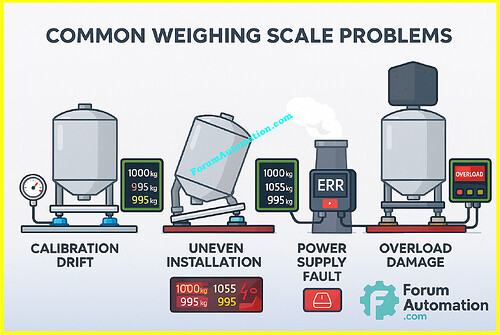What is the common problem of weighing scales?
What is the common problem of weighing scales?
One of the most common difficulties with weighing scales is that they don’t give accurate readings. This can happen because they weren’t calibrated correctly, they weren’t placed evenly, the batteries are dead, or they are worn out. Digital weighing scales are very sensitive, and even small problems might make them less reliable.
When the scale moves away from its genuine zero point, it causes problems with calibration, which means that it always reports weight too high or too low. Changes in temperature, humidity, or frequent use can have an effect on this. Another typical problem is uneven surfaces, which can make it hard for scales to appropriately distribute weight. Putting a scale on a carpet or floor that isn’t level can make the readings change.
Problems with batteries are almost as common. Batteries that are weak or dying can make the display flash, exhibit “ERR” errors, or give you weight values that don’t make sense. It’s easy to remedy just changing the batteries often. Another common problem is putting too much weight on the scale, which can break the sensors and make them less accurate over time.
Dents, fractured glass, or bent load cells are all examples of physical damage that directly affects how the scale works. In older scales, natural wear and tear also makes them less accurate over time, so they need to be recalibrated or replaced.
The most common difficulty with weighing scales is that they give wrong or changing readings. This is usually because of problems with calibration, uneven surfaces, poor batteries, or damage from being overloaded. To keep the scale accurate and make it last longer, you should do regular maintenance including putting it on a flat surface, recalibrating it as needed, not overloading it, and changing the batteries.
